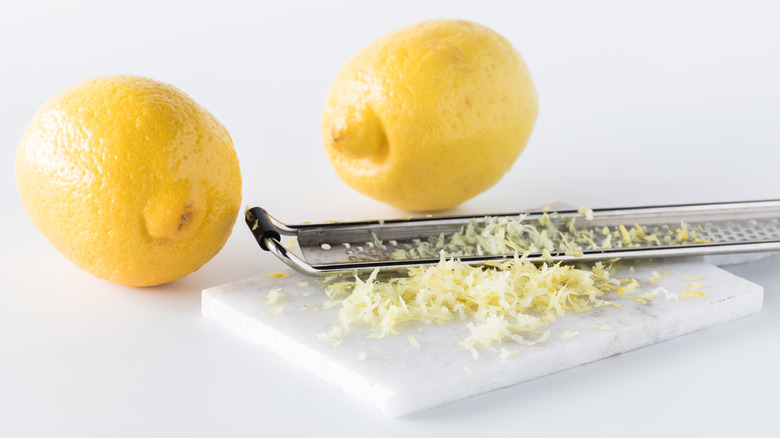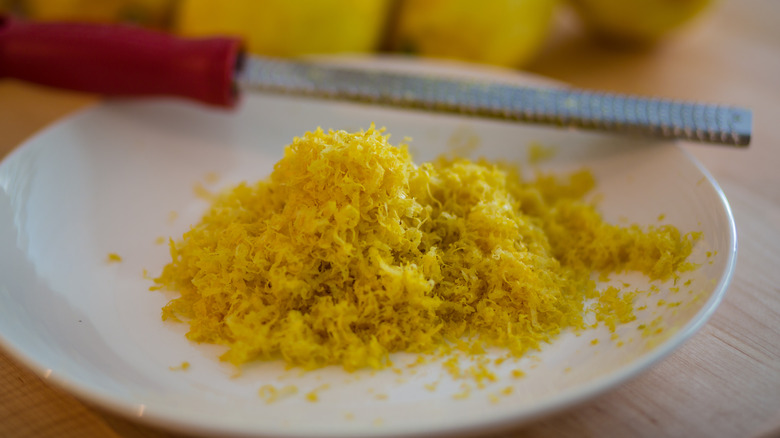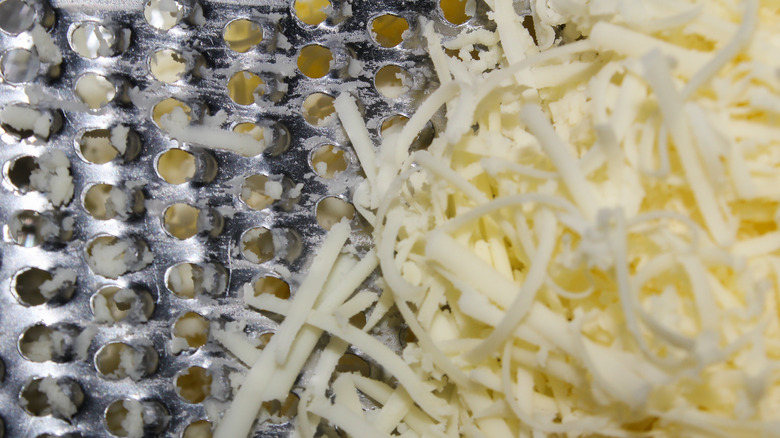Is There A Best Way To Clean A Microplane Zester/Grater?
Is there a professional chef or everyday home cook out there who doesn't extol the virtues of Microplane zester/grater after they break it out of its packaging and start using it on the regular? So what if there's a bit of skin loss on occasion? But seriously, those things are sharp! The benefits do outweigh the hazards though — we're talking finely shaved lemon zest, chocolate, ginger, and cheese.
Sure, plenty of copycat rasp graters have come off the assembly line and into kitchen stores since Microplane inadvertently became a rising star in the food world back in the 1990s (per The New York Times). But say its name: No grater has quite the cachet and name recognition as Microplane. The Domestic Goddess herself considers a hand-held Microplane grater as essential and as indispensable as a classic four-sided box grater (via Martha Stewart).
Cleaning a rasp grater, however, seems to be something one learns by trial and error — it's not as simple and straightforward as cleaning a cup or spoon. And if you're the type of cook who prefers to clean everything at the end of a cooking session instead of "washing as you go,” a Microplane gunked up with dried-on ginger or garlic could be the thing that changes your ways.
The tap and rinse technique
Microplane and other rasp graters work by gently rubbing or sliding things like citrus, garlic, ginger, and cheese in a downward motion on the sharp, raised surface of the tool. The tool is a kitchen workhorse and like some other gadgets, may just change your life.
What's the best way to keep the ultra-handy and uber-sharp Microplane rasp grater clean and sparkling after each use? Users of the social media platform Reddit have some ideas. One user asked "How do you guys clean your Microplane?” Quick to advise, many users suggest giving the tool a quick "swish” in hot water before taking a sponge or short-bristled brush to it and running it along the grater. Most users suggest following the blade pattern to avoid ruining your sponge. Food matter can cling to the underside, and a wet sponge on that side should work fine, Redditors said.
Food52 asked Lisa Egger, a representative of Microplane, for tips on keeping the popular rasp grater clean. She suggested giving the tool a gentle tap over a bowl or cutting board to remove food particles, followed by an immediate hot water rinse and a brushing if needed. "We don't recommend soaking, as water can make its way into the handle,” Egger explained. According to the Microplane website, the tools are dishwasher safe, but gentle washing-by-hand and air-drying are preferred for keeping the stainless steel gizmos razor sharp.
Grate discovery: How the Microplane got its start
If you know your way around a woodworking shop, you know that a rasp is a long, narrow, metal tool used on wood and stone to shave some of those materials off a given piece or project. The tool is used in a forward motion and works best when held with two hands to better manage force and direction (per Common Woodworking).
The rasp started its transition to widespread kitchen use in 1994 when a Canadian homemaker making a cake wanted a better and more efficient way to zest oranges — and grabbed a rasp from the family-owned hardware store. Talk about a lightbulb-goes-on moment: Lorraine and Leonard Lee were so dazzled by the tool's ability to shave citrus they let their customers know the rasp produced by Russellville, Arkansas-based Grace Manufacturing was equally at home in workshops and kitchens (per The New York Times).
The rest is history. Move over four-sided box grater and spade-shaped citrus zester dragged on fruit to yield strands of zest. The Microplane now comes in many sizes, some even with colored handles and handles with colorful prints — including Buffalo plaid and animal print.


